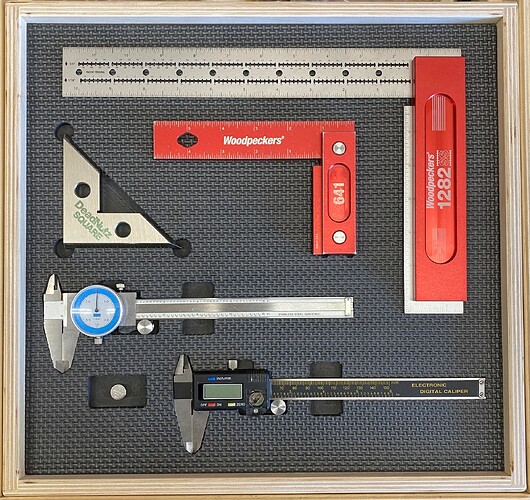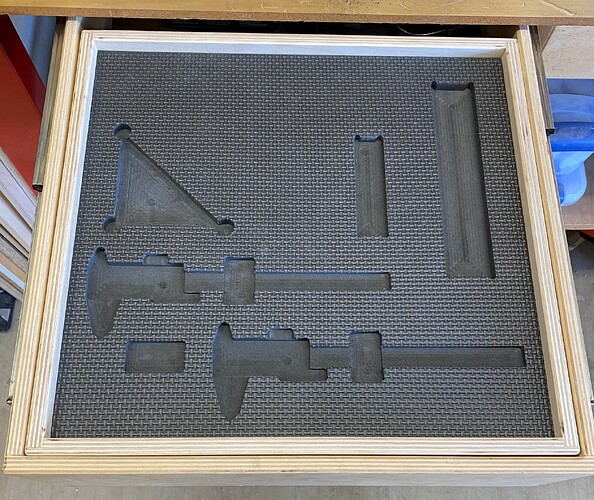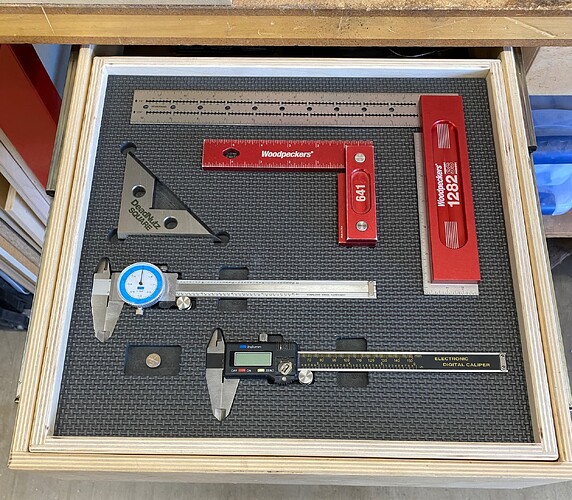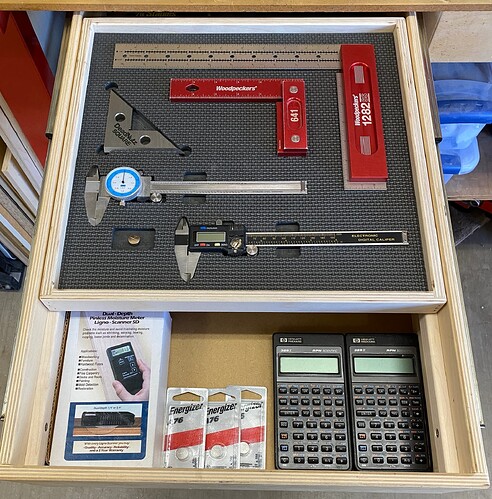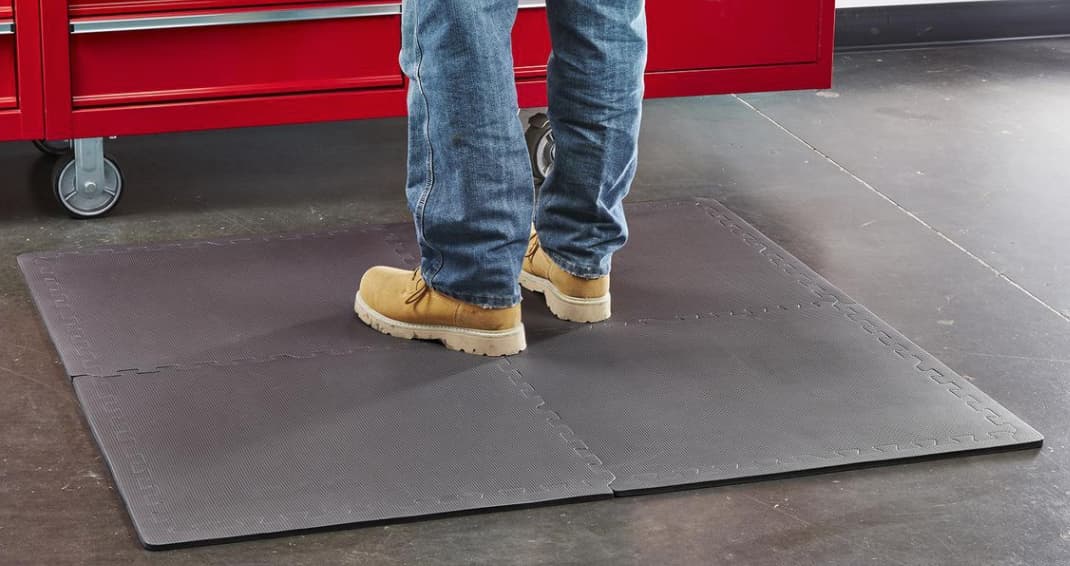I needed a safe place for squares and calipers, so I built a sliding tray that fits inside an existing drawer. The foam insert was made from a section of Harbor Freight anti-fatigue mat. This stuff cuts really clean using a fast feed rate (150ipm). $9.99 for four 2-foot squares, 1/2" thick. A 2 flute, 1/4" downcut endmill created a cleaner top edge than a 3 flute, 1/4" upcut.
For an example of how it cuts if one doesn’t move fast enough see:
(still usable, but not so nice)
Nice drawer sliding insert Steve! Good idea.
Has anyone tried using the great packing foam from the 5 Pro shipping boxes for similar cutting?
If its the same black foam that comes with accessories like Z-Plus and HDZ, then yes. It cuts good but as @WillAdams hinted, go FAST. I did 150 ipm and it worked good on the Harbor Freight foam, but in general you should probably go faster. I should’ve mentioned I was running at 24,000 RPM.
Here’s an interesting video on the topic from @wmoy
Ah, my favorite calculator of all time - the HP 32SII. I wish they still made calculators like this. I had two and one finally gave out on me. The other is still going strong after about 30 years.
Great job on the drawer foam insert! (…but I’m more envious of the calculators! ![]() )
)
Nice! Looks like a great fit, Steve. I know there are several ways to go about it, but have you narrowed down a preferred method to model the projected area of each tool? Those seem common enough that the dimensions or even the CAD files are available online somewhere perhaps.
One straight-forward way is to lay things out on a scanner (w/ a protective transparent plastic sheet to protect the glass) and scan them.
Or, use a triangular block of wood w/ a divot and a pen insert (or a specialized long nect) to trace an outline.
Or, arrange on a gridded surface and photograph.
Mine too. Used ones currently fetch $100+ on auction sites. I bought two new ones in the 1990s and they are still going strong. I started with an HP 41C programmable, which was a godsend in engineering school in the early 1980s. Once you go RPN (Reverse Polish Notation), you never go back. My wife and kids never touched my calculators because they don’t have an “equals” (“=”) key. ![]()
This was my first attempt at inserts. The squares were easy because the pockets were just rectangles and a triangle, which I measured and drew in CC. I tried photographing the calipers and tracing them in CC, but that didn’t work well. I ended up tracing the caliper on white paper with a mechanical pencil, scanning the drawing as a jpg, tracing it in CC, then cleaning up the lines with the editing tools. Then I did a test cut and tweaked the lines for a perfect fit. It’s a bit of work but the end result is worth it.
Your Harbor Freight pads are looking good!
There’s always a story, isn’t there? ![]()
I started with the HP-9820 in engineering classes. Man, I learned a lot about programming on that thing (mostly from mistakes.) The school’s professor of engineering was adamant that I be the one to make this new purchase relevant! ![]()
Seems like simultaneously, one of the “rich” students came in with an HP-35 and didn’t hesitate to show it off! Envy was a heavy cloud those days.
It was 4 or 5 years later (when I had a real job) that my favorite HP-21 came to me. I used that for a bunch of engineering stuff, and the RPN really made it all efficient. Its still around here somewhere with a power supply to replace the battery that finally died.
Not a fancy HP, but I have found this iPhone app to be a very handy calculator. I have a physical woodworking calculator but this app is a bit easier to use and pretty intuitive.
What did you use for work holding with that foam?
I used a few small pieces of double-sided carpet tape. I usually use blue painter’s tape and CA glue for projects, but painter’s tape doesn’t stick to this foam very well.
I like it! I don’t need the calculator areas but I do have a few slides rules and an abacus that I’m fond of!
Really Awesome job, Very Clean ![]()
Peace to You
I could never get the flow of the Reverse Polish Notation. The real math folks loved it.
I wore out 3 TI calculators back in the day.
Bought the HP-25 back in 1975 when I was a college freshman (engineering) and it just came out. MUCH cheaper than the HP-65 at that time. The HP-25 was my first RPN calculator and I so feel in love with it. The programmability was outstanding at that time. It saved me HOURS of repetitive calculations for lab exercises. Used it for many, many, many years. Damn … that was a LONG time ago … almost 50 years.
This topic was automatically closed 30 days after the last reply. New replies are no longer allowed.
